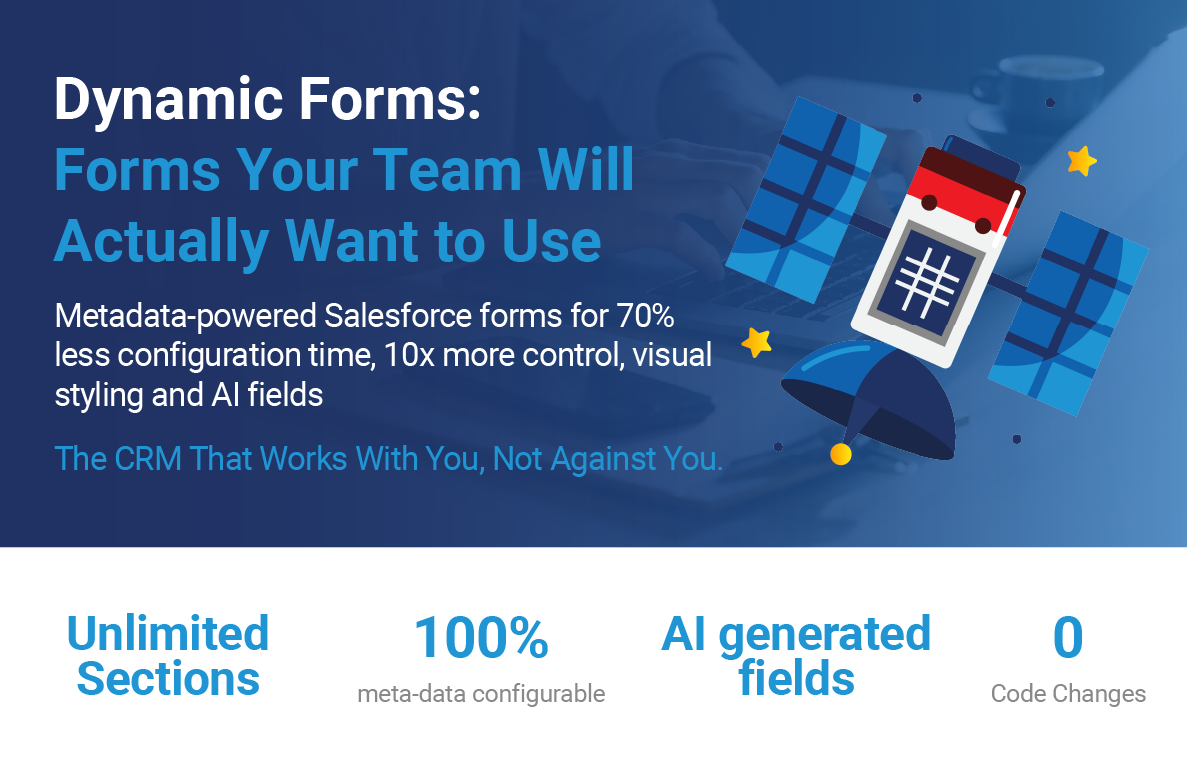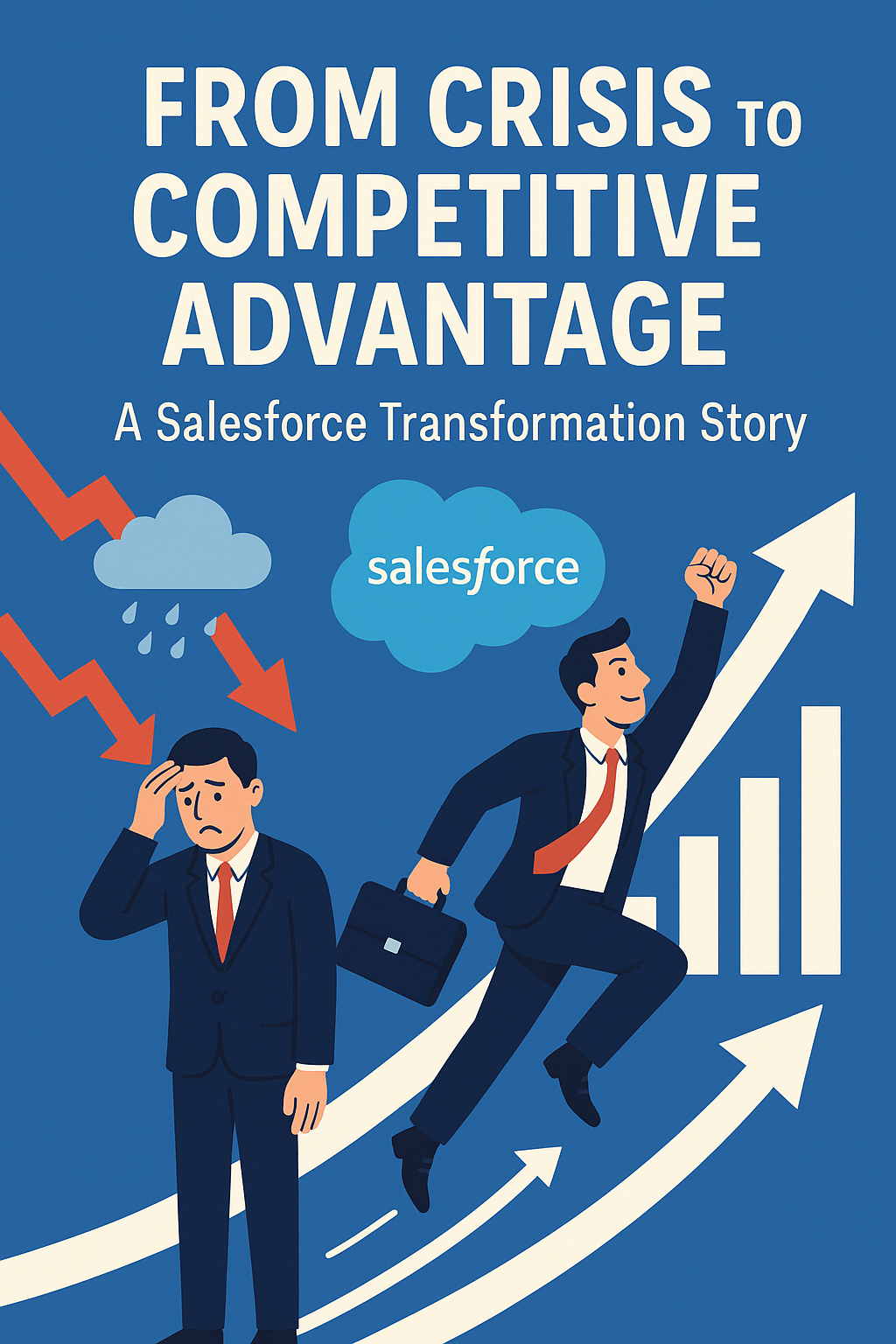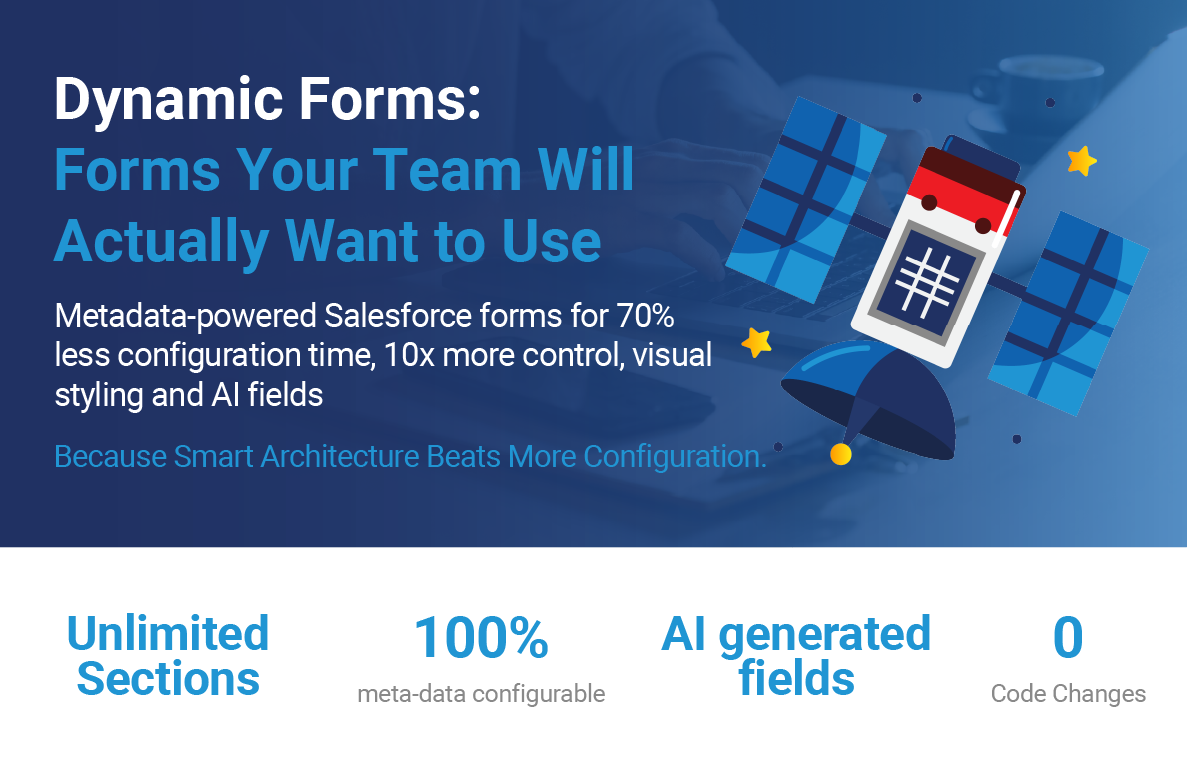Intelligent Field Generation That Actually Works
Picture this: A sales rep just had a fantastic discovery call. They need to update the opportunity record, but now they're staring at blank fields for "Next Steps," "Executive Summary," and "Competitive Analysis." Twenty minutes later, they've written mediocre summaries that miss key points from the call. Sound familiar?
This is the hidden productivity killer in every CRM – the gap between what happened and what gets documented. It's not that your team doesn't know what to write; it's that translating thoughts into structured data takes time they don't have.
Why AI Field Generation Changes Everything
The average knowledge worker spends 2.5 hours daily on documentation. For a 100-person sales team, that's 55,000 hours annually – equivalent to 26 full-time employees doing nothing but typing. But the real cost isn't time; it's what gets lost in translation.
When reps rush through documentation:
- Critical competitive insights vanish
- Next steps become generic ("Follow up next week")
- Executive summaries miss key value propositions
- Customer context disappears between interactions
AI field generation flips this dynamic. Instead of starting from scratch, users refine intelligent suggestions based on comprehensive context. The cognitive shift from "creation" to "curation" reduces mental load by 70% while improving quality by 40%.
The Strategic Framework for AI Fields
Start with High-Impact, Low-Risk Fields
Begin your AI journey where you'll see immediate wins without risking critical data:
Week 1 Winners:
- Next Steps (everyone struggles with these)
- Meeting summaries (time-intensive, formulaic)
- Email templates (high volume, clear patterns)
Why these work: They're judgment-light but time-heavy. AI excels at structure and synthesis, while humans remain in control of strategy and relationships.
Avoid initially:
- Pricing decisions (too strategic)
- Legal commitments (too risky)
- Personnel evaluations (too sensitive)
The Context Hierarchy That Drives Intelligence
The secret to useful AI generation isn't the AI – it's the context you feed it. Think of context in three layers:
Layer 1: Direct Context (The What) Current record fields tell AI what's happening:
- Deal size, stage, close date
- Customer name, industry, tier
- Product selection, quantities
Layer 2: Relationship Context (The Who) Related records reveal the human dynamics:
- Stakeholder roles and engagement levels
- Historical interactions and preferences
- Team members involved
Layer 3: Historical Context (The How) Past patterns inform future actions:
- Previous successful deals in this industry
- Common objections and responses
- Typical next steps at this stage
When you combine all three layers, AI generates content that feels surprisingly human because it understands not just the data, but the story behind it.
Building Your Prompt Strategy
The Psychology of Effective Prompts
Think of prompts as instructions to a brilliant but literal assistant. The clearer your instructions, the better the output.
Instead of: "Generate a summary"
Try: "You're a strategic sales advisor. Create an executive summary for this [Stage] opportunity with [Account] in [Industry]. Focus on value proposition and competitive differentiation. Maximum 200 words, bullets for key points."
The difference? Role clarity, specific context, clear constraints, and formatted output.
The Three Prompt Patterns That Always Work
Pattern 1: The Advisor Use when you need strategic thinking: "As a senior [role], analyze this [situation] and recommend [specific output]. Consider [context] and focus on [priorities]."
Pattern 2: The Analyst Use for data synthesis: "Review the following [data points] and identify [patterns/insights]. Summarize in [format] highlighting [key aspects]."
Pattern 3: The Communicator Use for external-facing content: "Draft a [communication type] for [audience] regarding [topic]. Tone should be [description]. Include [required elements]."
The ROI Calculation You Need
Let's talk real numbers for a 100-person team:
Traditional Approach:
- 30 minutes per opportunity for documentation
- 5 opportunities per rep per week
- 2.5 hours per rep per week
- 250 hours per week organization-wide
- Annual cost at $50/hour: $650,000
With AI Field Generation:
- 3 minutes per opportunity (90% reduction)
- Same 5 opportunities per week
- 15 minutes per rep per week
- 25 hours per week organization-wide
- Annual cost at $50/hour: $65,000
- AI costs: ~$4,000/year
- Net savings: $581,000
But the real value isn't time saved – it's what happens with that time:
- More customer conversations
- Deeper deal strategy
- Better coaching conversations
- Earlier pipeline risk identification
Managing the Change
Week 1-2: Build Trust with Quick Wins
Start with your top performers. They'll immediately see the value and become evangelists. Choose 3-5 fields where they currently spend the most time.
Success metric: Time reduction, not perfection. If AI gets you 80% of the way there in 10% of the time, that's a win.
Week 3-4: Expand Thoughtfully
Add more fields based on user requests, not your assumptions. The fields they ask for are the ones causing pain.
Success metric: Adoption rate. If users aren't clicking the sparkles icon (✨), find out why.
Month 2: Scale with Governance
Create prompt templates for consistency. Not every user needs to craft prompts – they need to use proven ones.
Success metric: Regeneration rate below 20%. If users constantly regenerate, your prompts need refinement.
Overcoming the Common Objections
"AI will write generic garbage" This happens when prompts lack context. The solution isn't avoiding AI; it's feeding it better information. Our implementations show 80% first-generation acceptance when context is comprehensive.
"This will be expensive" The average cost is $0.33 per user per month. The average value is $55 per user per month. That's 166x ROI. The question isn't whether you can afford it, but whether you can afford not to.
"Our data is too sensitive" Use appropriate models for your security requirements. Financial services clients use private LLMs. Healthcare uses HIPAA-compliant providers. There's a solution for every compliance need.
The Competitive Advantage Nobody Talks About
Here's what happens when your team spends less time typing and more time thinking:
Sales teams identify competitive threats 3 weeks earlier because they're analyzing, not documenting.
Service teams resolve issues 35% faster because context is immediately available, not buried in notes.
Success teams prevent 22% more churn because they spot patterns in properly documented interactions.
The compound effect is real: Better documentation → Better decisions → Better outcomes → Competitive advantage.
Your 30-Day Implementation Roadmap
Days 1-7: Foundation
- Identify your three most painful documentation fields
- Create initial prompts with clear roles and constraints
- Test with power users
Days 8-14: Refinement
- Gather feedback on initial generations
- Adjust context fields based on what's missing
- Add 2-3 new fields based on requests
Days 15-21: Expansion
- Roll out to broader pilot group
- Create prompt library for consistency
- Measure time savings and quality scores
Days 22-30: Scale
- Department-wide deployment
- Establish governance model
- Calculate and communicate ROI
The Future State
We're moving toward predictive documentation where AI doesn't wait for you to click generate. It knows that after a discovery call, you'll need next steps. After a support case, you'll need a resolution summary. After a QBR, you'll need an executive recap.
The fields populate themselves. You refine and approve. Documentation becomes review, not creation.
Conclusion
AI-powered field generation isn't about replacing human intelligence – it's about amplifying it. When documentation takes minutes instead of hours, your team can focus on what actually drives business value: relationships, strategy, and problem-solving.
The organizations winning with AI aren't the ones with the best technology. They're the ones who understood earliest that the battle isn't human versus machine – it's human with machine versus human without.
Your competitors are already saving 1,100 hours monthly. Every day you wait is another day they're pulling ahead.
The question isn't whether to implement AI field generation. It's whether you'll lead the change or chase it.



